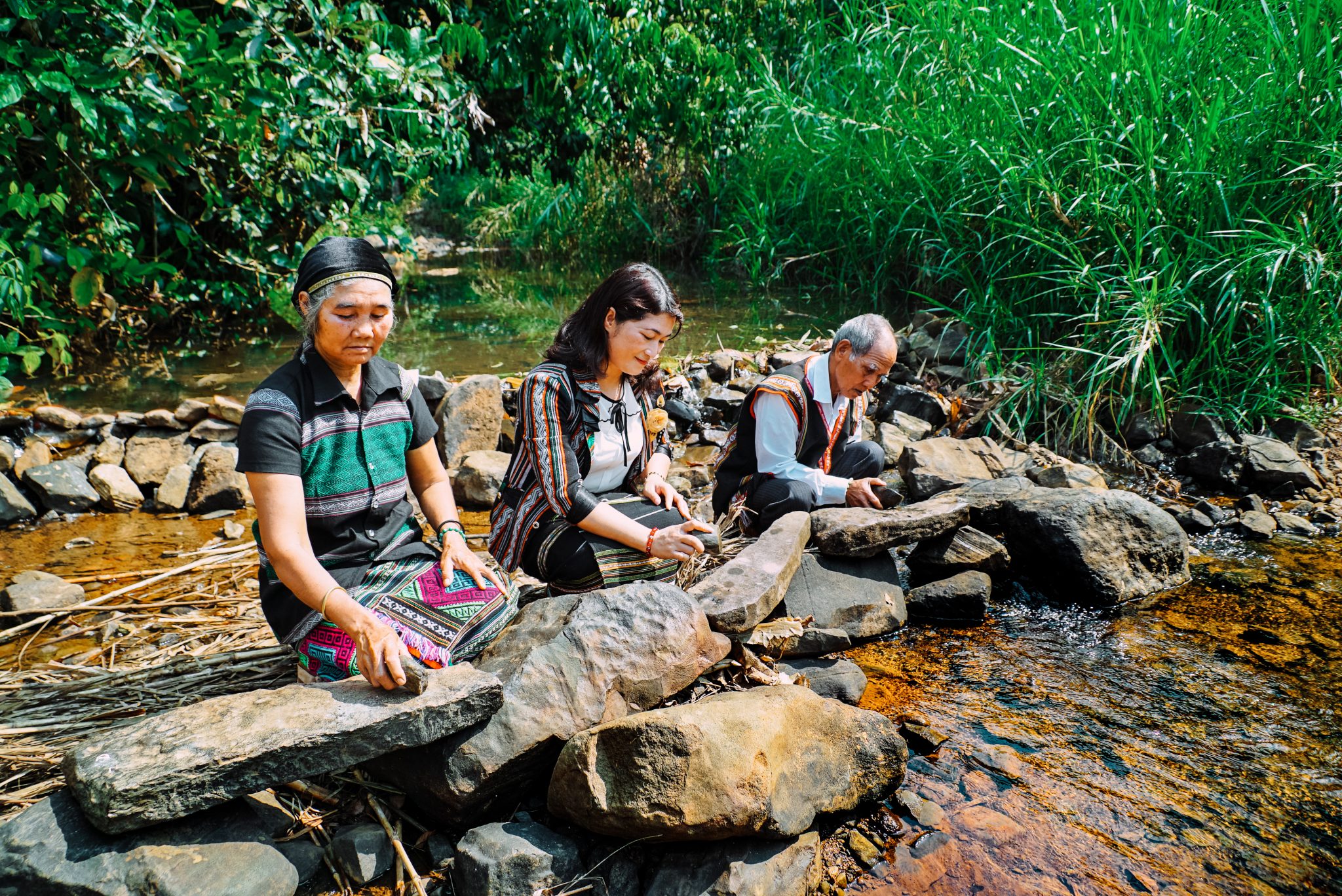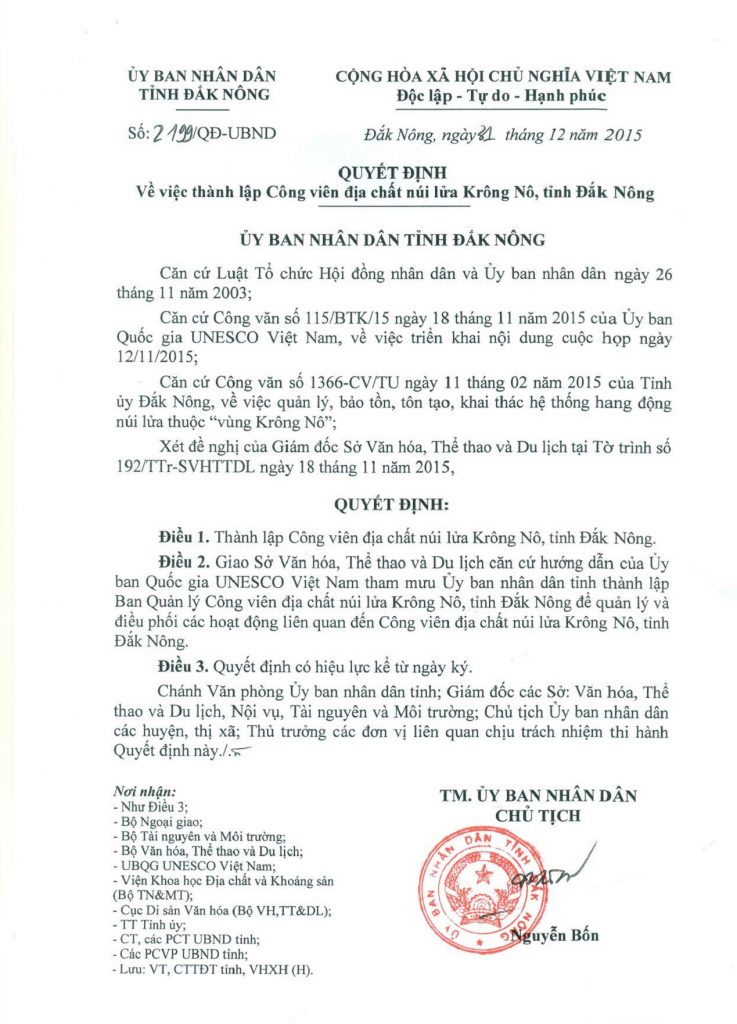Lithophone, which is “goong lu” in the language of M’Nong ethnic group, meaning “stone sounds like gong”, is the oldest musical instrument not only of the ethnic people in the Central Highlands of Vietnam, but also of humanity. It is made of stone bars with different length and thickness. The longer and larger the bar, the lower the sound. The shorter, smaller and thinner the bar, the higher the sound. In 2005, the lithophone was listed by UNESCO as a musical instrument in the Central Highlands space of gong culture.
In Vietnam, the first lithophone set was discovered by the French ethnologist Georges Condominas in 1949 in N’dut Lieng Krat, a village of M’Nong Gar people in Krong No commune, Lak district, Dak Lak province. This about 3000-year-old lithophone is now on display in the Museum of Man in Paris, France.
In Dak Nong, there were two lithophones found respectively in 1993 and in 2014. At present, both lithophones are preserved and displayed at the Dak Nong Museum.

The first lithophone was discovered at Dak Kar stream in Quang Tin commune, Dak R’Lap district, Dak Nong province and named Dak Kar lithophone. According to the research results of the scientists, it is about 2500 years old, made from cordierite hornstone. Through milling and processing, prehistoric people created a complete lithophone consisting of 3 bars: T’ru (father) bar, T’ro (mother) bar and Te (child) bar.
The second lithophone was discovered in 2014 in Dak Son village, Nam Xuan commune, Krong No district, Dak Nong province and was named Dak Son lithophone. Dak Son lithophone consists of 16 bars, of which 11 bars were intact, 5 bars were broken in two or more sections but could be patched up to the original form.

Based on the manufacture technique, sound frequency and arrangement into instrument sets through the sound frequency of music sciences, the scientist confirmed that Dak Son lithophone is of the tradition of N’Dut Lieng Krak, a collection of ancient lithophone dating back to about 3,000 years ago.
Với người đồng bào M’Nông sinh sống trong vùng Công viên địa chất Đắk Nông, đàn đá thể hiện sự giao hòa, chinh phục của con người đối với thiên nhiên. Với ý nghĩa linh thiêng đó, đàn đá thường được trình tấu trong những ngày lễ hội như: Lễ cúng Yang, lễ mừng lúa mới, mừng được mùa,… Người M’nông xưa quan niệm rằng, thanh âm của đàn đá là sợi dây linh thiêng, là phương tiện để nối liền giữa con người với trời đất thần linh, nối quá khứ với hiện tại và hướng con người đến những điều tốt đẹp trong tương lai.
For M’Nong people in Dak Nong UNESCO Global Geopark, the lithophone shows the harmony and the conquest of human with the nature. Because of the sacred meaning, this instrument was performed during festivals such as Yang worship, New rice ceremony,… The ancient people assumed that the lithophone’s sound was a means of connecting human beings to heaven and earth, connecting the past with the present and bring people to prosperous future.











